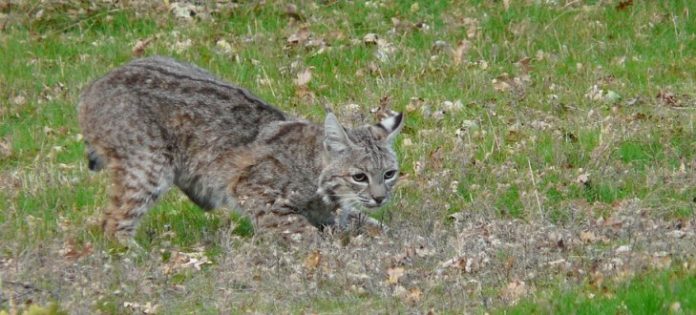by Alison Mitchell, Co-Executive Director, New Jersey Conservation Foundation
Here in the nation’s most densely populated state, a diversity of wildlife is something that can never be taken for granted. Wildlife habitats face a constant barrage of threats, and many species are seriously imperiled. A combination of vigilance, sound planning and strong actions is needed to maintain the biological diversity that makes New Jersey special.
Thankfully, New Jersey has proven itself a national leader in protecting biodiversity, and preserving the natural lands that make it possible.
Fifty years ago – on Dec. 14, 1973 – New Jersey Gov. William T. Cahill signed the state’s Endangered and Nongame Species Conservation Act. This critical step took place two weeks before President Richard Nixon signed the federal Endangered Species Act!
The new state law established the New Jersey Department of Environmental Protection’s (NJDEP) Endangered and Nongame Species Program (ENSP), whose mission is to conserve the state’s biological diversity by maintaining and enhancing imperiled species within healthy, functioning ecosystems.
The 50th anniversary of the landmark legislation was celebrated in early December by the NJDEP staff and conservationists across this state we’re in.
“The New Jersey Endangered and Nongame Species Conservation Act was a milestone in the history of environmental protection, coming at a time when the environment was under siege from pollution, wanton use of pesticides and uncontrolled development,” said Commissioner Shawn LaTourette. “Without this law, many of the species that we enjoy today, from bald eagles to bobcats to bog turtles, might no longer be part of New Jersey’s landscape.”
The ENSP is responsible for the protection and management of more than 500 species, including 83 listed as threatened or endangered.
Endangered species are those whose prospects for survival in New Jersey are in immediate danger because of a loss or change in habitat, over-exploitation, predation, competition, disease, disturbance or contamination. Threatened species are those that may become endangered if conditions deteriorate.
New Jersey’s endangered species include bobcats, Northern long-eared and Indiana bats, Allegheny woodrats, red knots, piping plovers, least terns, timber rattlesnakes, bog turtles, blue spotted and Eastern tiger salamanders, gray petaltail dragonflies and Arogos skipper butterflies. Also endangered are breeding populations of several raptors, including bald eagles, peregrine falcons, northern goshawks, red-shouldered hawks, short-eared owls and northern harriers.
Threatened species include barred and long-eared owls, American kestrels, red-headed woodpeckers, wood turtles, Northern pine snakes, Pine Barrens tree frogs, longtail and Eastern mud salamanders, frosted elfin butterflies, and Kennedy’s emerald dragonflies.
The ENSP also tracks “special concern” species, those that warrant attention because of evidence of decline, inherent vulnerability to environmental deterioration, or threats from habitat modification. These include eastern meadowlarks, American oystercatchers, sharp-shinned hawks, little blue and tricolored herons, eastern box and spotted turtles, carpenter frogs, Fowler’s toads, and Jefferson, marbled and northern spring salamanders.
Over the past five decades, the Endangered and Nongame Species Conservation Act has led to the recovery of many species, and continuing efforts to help many more.
“We have many wildlife success stories – the recovery of ospreys to their historic population size; the return of the peregrine falcon statewide; and the remarkable rebound of bald eagles, to name a few,” noted ENSP Chief Kathy Clark.
As many New Jersey birdwatchers can attest, bald eagles have gone from being nearly extirpated to becoming a fairly common sight. In the early 1980s, only a single nesting pair remained here. Thanks to a comprehensive restoration program and a ban on the pesticide DDT, New Jersey now has more than 250 nesting eagle pairs.
Peregrine falcons were once lost from the wild in all states east of the Mississippi River due to DDT. Through reintroduction and careful management, peregrines have been restored to many natural cliffs and have adapted to tall buildings in our cities. There are now more than 40 breeding pairs in New Jersey.
While bald eagles, peregrine falcons and ospreys have made a comeback, other species are still struggling, including bats. Bat populations in New Jersey and beyond were decimated in the 2000s by white-nose syndrome, caused by a fungus in hibernation caves. ENSP efforts to help bats rebound include preserving land to safeguard important bat hibernacula and foraging habitat; installing gates to protect hibernating bats from human disturbance; informing residents and pest control companies about proper handling of bats in buildings, and using new techniques to study and monitor bats.
While the 50th anniversary of the Endangered and Nongame Species Conservation Act is an occasion to be celebrated, many challenges lie ahead, including climate change, invasive species, illegal collecting of rare wildlife, and roadway mortalities.
The ENSP’s Connecting Habitat Across New Jersey (CHANJ) program works to address habitat fragmentation caused by roads and developments, one of the greatest threats to many wildlife populations. Amphibians and reptiles are most threatened by roadway crossings, but mammals including bobcats are affected as well.
CHANJ aims to make New Jersey’s landscape and roadways easier for wildlife to navigate by identifying key areas and actions needed to achieve habitat connectivity. This project has led to the construction of tunnels beneath roadways to help wildlife pass safely between habitats; guided habitat preservation efforts; and enlisting volunteers to help provide safe road crossings during spring migrations.
Bravo to the Endangered and Nongame Species Program and its partners for 50 years of hard work and success! For more information about the ENSP, including a full list of endangered, threatened and special concern species, go to https://dep.nj.gov/njfw/wildlife/endangered-and-nongame-species/.
And to learn more about preserving New Jersey’s land and natural resources, visit the New Jersey Conservation Foundation website at www.njconservation.org or contact me at [email protected].


